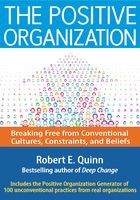
The Bottom Line
I return to my friend, the young surgeon. As we concluded our conversation, he pointed out an irony. In his hospital there was a prime emphasis on both profit and growth. Yet Hospital 1 was outpacing his hospital in both areas. Hospital 1 had a more affirmative and constructive human culture as well as superior financial outcomes.
He acknowledged that his observations about the two hospitals could be attributed to many other factors beyond leadership. Even so, he said, leaders matter. If people in authority have a narrow orientation to profit, technical problem solving, and linear analysis (see the bottom half of Figure 1.1) they may lack the capacity to transform a conventional or negative culture into a positive one.
What my friend was suggesting is exactly what I have seen in organizations across the globe. People, like the first CEO, have a broader mental map that gives rise to a different kind of reality. Some people value analysis, control, efficiency, and profit, but they seem to lack the generative capacity to create cultures of trust, unity, learning, and growth. Others have the opposite problem: they are quite visionary but cannot keep the system organized. A few can do both; it is as if they can live in two different worlds at the same time—the world of stability and productivity and the world of unity and change. In the next chapter we call this the ability to be bilingual.